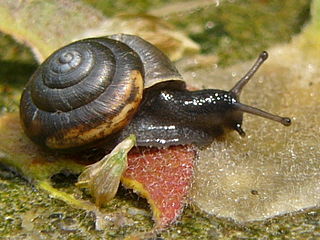
Euphorbia is a very large and diverse genus of flowering plants, commonly called spurge, in the family Euphorbiaceae. "Euphorbia" is sometimes used in ordinary English to collectively refer to all members of Euphorbiaceae, not just to members of the genus.

Phyllanthus is the largest genus in the plant family Phyllanthaceae. Estimates of the number of species in this genus vary widely, from 750 to 1200. Phyllanthus has a remarkable diversity of growth forms including annual and perennial herbs, shrubs, climbers, floating aquatics, and pachycaulous succulents. Some have flattened leaflike stems called cladodes. It has a wide variety of floral morphologies and chromosome numbers and has one of the widest range of pollen types of any seed plant genus.

Phyllanthaceae is a family of flowering plants in the eudicot order Malpighiales. It is most closely related to the family Picrodendraceae.

The family Pandaceae consists of three genera that were formerly recognized in the Euphorbiaceae. Those are:

Codiaeae is a tribe of the subfamily Crotonoideae, under the family Euphorbiaceae. It comprises 15 genera.

Crotoneae is a tribe of the subfamily Crotonoideae, under the family Euphorbiaceae. It comprises five genera.

Chrozophoreae is a tribe of plant of the family Euphorbiaceae.

Euphorbieae is a tribe of flowering plants of the family Euphorbiaceae. It comprises 3 subtribes and 5 genera. The 3 sub tribes are: Euphorbiinae, Neoguillauminiinae and Anthosteminae. The 5 genus general are: Argythamnia, Caperonia, Chiropetalum, Ditaxis and Chiropetalum.
Pachystroma is a monotypic plant genus in the family Euphorbiaceae first described as a genus in 1865. It is the only genus of its tribe (Pachystromateae). The only known species is Pachystroma longifolium, native to Brazil, Bolivia and Peru.
Benoistia is a genus of shrubs or trees of the spurge family (Euphorbiaceae) and the monotypic subtribe Benoistiinae. It was first described as a genus in 1939. The entire genus is endemic to Madagascar. It is dioecious.
- Benoistia orientalisRadcl.-Sm. - N + E Madagascar
- Benoistia perrieriH.Perrier & Leandri - Madagascar
- Benoistia sambiranensisH.Perrier & Leandri - N Madagascar

Sandwithia is a plant genus of the family Euphorbiaceae first described in 1932. It is native to northern South America. It is dioecious.
- Sandwithia guyanensisLanj. - French Guiana, Guyana, Venezuela, N Brazil
- Sandwithia heterocalyxSecco - SE Colombia, S Venezuela, N Brazil

Leptopus, the maidenbushes, are a genus of plants in the family Phyllanthaceae native to southern Asia from the Caucasus east to China and Maluku. The plants are monoecious herbs and shrubs with simple, entire leaves and small, green flowers.
Shirakiopsis is a genus of flowering plants in the family Euphorbiaceae first described as a genus in 1999. There are six known species, 3 native to tropical Asia and 3 to tropical Africa.

Neoshirakia, known as milktree, is a genus of plants in the Euphorbiaceae, native to east Asia. It is part of a group first described in 1954 with the name Shirakia, but this proved to be an illegitimate name, unacceptable under the Code of Nomenclature. The genus was later divided, with its species distributed amongst three genera: Neoshirakia, Shirakiopsis, and Triadica. Neoshirakia contains only one known species, Neoshirakia japonica, known as tallow tree, native to China, Korea, and Japan. The name Shirakia thus became a synonym of Neoshirakia because S. japonica was the type species for that genus, the species now renamed N. japonica.

Bischofia is a genus of plants in the family Phyllanthaceae first described as a genus in 1827. It is native to southern China, the Indian Subcontinent, Queensland, New Guinea, and various islands of the Pacific. It is the only member of the tribe Bischofieae. They are dioecious, with male and female flowers on separate plants, but may rarely be monoecious.

Hygromiidae is a taxonomic family of small to medium-sized air-breathing land snails, terrestrial pulmonate gastropod mollusks in the superfamily Helicoidea.

Euphorbiaceae, the spurge family, is a large family of flowering plants. In English, they are also commonly called euphorbias, which is also the name of the type genus of the family. Most spurges, such as Euphorbia paralias, are herbs, but some, especially in the tropics, are shrubs or trees, such as Hevea brasiliensis. Some, such as Euphorbia canariensis, are succulent and resemble cacti because of convergent evolution. This family has a cosmopolitan global distribution. The greatest diversity of species is in the tropics; however, the Euphorbiaceae also have many species in nontropical areas of all continents except Antarctica.
Jeremy James Bruhl is an Australian botanist. He is an emeritus professor in the School of Environmental and Rural Science at the University of New England and director of the N.C.W. Beadle Herbarium which holds c.110,000 plant specimens.













